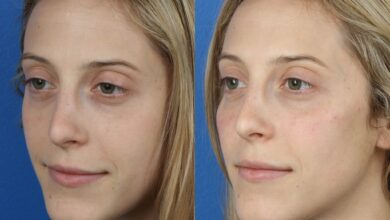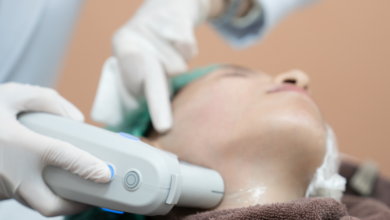
In this informative article, Stylish.ae provides expert advice on the best age for a facelift. As we age, our skin undergoes various changes, leading many individuals to consider cosmetic procedures. With insights from industry professionals, this article delves into the factors that contribute to the ideal age for a facelift, assisting readers in making informed decisions about their aesthetic journey.
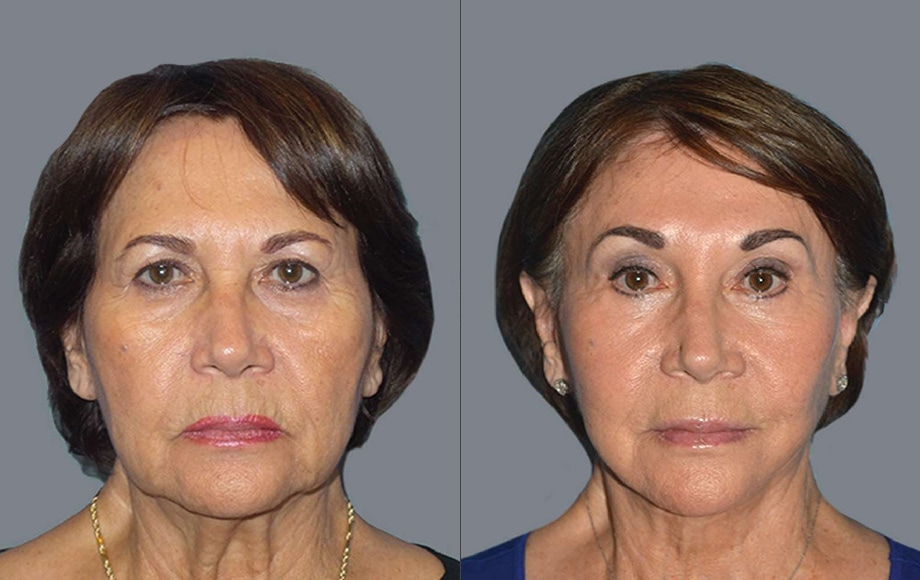
Factors to Consider Before Getting a Facelift
Getting a facelift is a major decision that should not be taken lightly. Before undergoing any cosmetic procedure, there are several factors you should carefully consider. These factors include age-related concerns, overall health, emotional readiness, and having realistic expectations.
Age-related concerns
Age is an important factor to consider when contemplating a facelift. Generally, most individuals who opt for this procedure are in their 40s, 50s, or 60s. In your 40s, you may begin to notice some signs of aging, such as fine lines and minor sagging. In your 50s, these signs may become more noticeable and you may develop deeper wrinkles and skin laxity. In your 60s and beyond, the effects of aging on the face are usually more pronounced.
It is important to note that age is not the sole determining factor for a facelift. Other factors, such as genetics and lifestyle, can also contribute to the aging process. Therefore, it is essential to consult with a qualified surgeon who can assess your unique situation and advise you accordingly.
Overall health
Before considering any surgical procedure, it is crucial to assess your overall health. Facelift surgery is a significant procedure that requires a certain level of physical fitness to ensure a safe and successful outcome. Your surgeon will evaluate your medical history, current health status, and any pre-existing conditions that may affect your ability to undergo surgery.
If you have any underlying health issues, such as hypertension, diabetes, or heart disease, it is important to disclose this information to your surgeon. They will determine if you are a suitable candidate for a facelift, or if any additional precautions or modifications need to be made.
Emotional readiness
Undergoing a facelift can have a profound impact on your emotional well-being. It is essential to assess your emotional readiness for this procedure before making a decision. It is normal to have mixed feelings and concerns about the outcome of the surgery, so discussing these with your surgeon is crucial.
Ensure that you have realistic expectations and understand the potential risks and limitations of the procedure. It is also important to have a strong support system in place to help you through the emotional journey of a facelift.
Realistic expectations
Having realistic expectations is vital when considering a facelift. While it can greatly improve your appearance and boost your self-confidence, it is important to understand that a facelift does not stop the aging process altogether. The goal of a facelift is to create a more youthful and rejuvenated appearance, but it cannot change your fundamental facial structure or prevent further aging.
During your consultation with a qualified surgeon, they will discuss with you what can realistically be achieved through a facelift based on your unique situation. It is important to have a thorough understanding of what to expect in order to make an informed decision.
Facelift Options for Different Age Groups
The aging process varies from person to person, and the optimal age for a facelift may differ as well. Here, we will explore the facelift options for different age groups, including your 40s, 50s, and 60s and beyond.
In your 40s
In your 40s, you may begin to notice the early signs of facial aging such as fine lines, mild sagging, and loss of skin elasticity. At this stage, non-surgical options such as injectables, dermal fillers, and skin tightening treatments may be sufficient to address these concerns.
For individuals in their 40s who desire a more dramatic rejuvenation, a mini-facelift or lower facelift may be appropriate. These procedures focus on improving the lower face and neck, targeting jowls and sagging skin. By tightening the underlying muscles and removing excess skin, a more youthful and refreshed appearance can be achieved.

In your 50s
In your 50s, the signs of aging become more pronounced. Deep wrinkles, furrows, and loss of volume in the mid-face may start to appear. At this stage, a full facelift is often recommended to address these concerns comprehensively.
A full facelift involves lifting and repositioning the underlying facial muscles, removing excess skin, and re-draping the skin for a more natural and youthful look. This procedure can target multiple areas of the face, including the cheeks, jowls, and neck, resulting in a more harmonious and rejuvenated appearance.
In your 60s and beyond
In your 60s and beyond, the effects of aging on the face become more prominent. Skin laxity, deep wrinkles, and volume loss are common concerns in this age group. A traditional or deep plane facelift may be recommended to address these issues.
A traditional facelift involves lifting and tightening the underlying muscles and tissues, removing excess skin, and repositioning the remaining skin for a smoother and more youthful appearance. Deep plane facelifts go a step further by also lifting and repositioning the deeper layers of tissue, providing even more significant rejuvenation.
It is important to consult with a qualified plastic surgeon to determine which facelift technique is best suited for your individual needs and desired outcome.
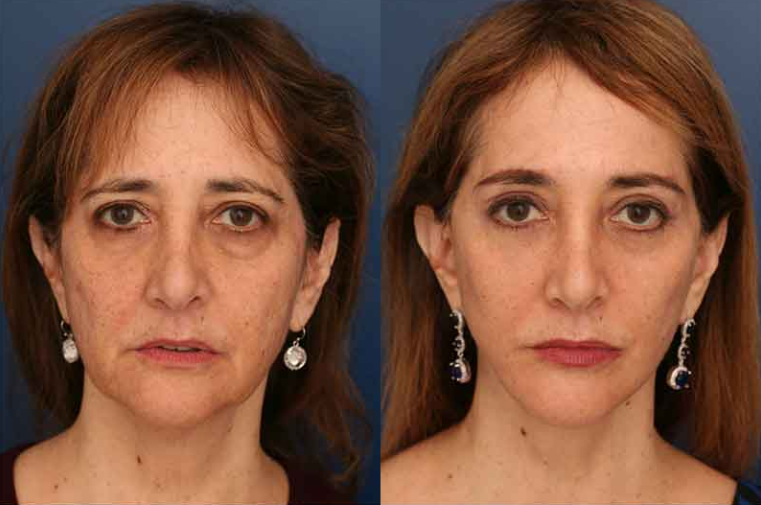
Understanding the Aging Process
Before delving into the specifics of facelift procedures, it is important to have a thorough understanding of the aging process. Aging affects the face in various ways, and this understanding can help you make informed decisions regarding facial rejuvenation procedures.
Effects of aging on the face
As we age, several changes occur in the face due to a combination of factors such as loss of collagen and elastin, decreased muscle tone, and the effects of gravity. These changes can lead to sagging skin, deep wrinkles, loss of facial volume, and a tired or aged appearance.
Understanding these effects can help you pinpoint the areas that bother you the most and discuss your concerns with a qualified surgeon.
Common signs of facial aging
Facial aging manifests in various ways, and everyone experiences it differently. However, there are common signs of facial aging that many individuals may encounter. These signs include the development of wrinkles, fine lines, and crow’s feet, sagging skin, jowls, hollowing of the cheeks, and the appearance of age spots or sun damage.
By identifying these signs, you can better articulate your concerns and work with your surgeon to develop a personalized treatment plan.

The role of genetics and lifestyle in aging
Both genetics and lifestyle choices play a significant role in the aging process. While genetics determine the natural rate at which the skin ages, lifestyle choices such as smoking, sun exposure, diet, and stress can accelerate the aging process.
It is crucial to lead a healthy lifestyle, including adopting a skincare regimen, protecting your skin from the sun, maintaining a balanced diet, exercising regularly, and managing stress levels. These factors can help slow down the aging process and prolong the results of facial rejuvenation procedures such as facelifts.
Signs You May Be Ready for a Facelift
Deciding whether or not to undergo a facelift is a personal choice. However, there are several signs that may indicate you are ready for a facelift. These signs include sagging skin and jowls, deep wrinkles and folds, loss of facial volume, and visible signs of aging despite a skincare regimen.
Sagging skin and jowls
One of the primary reasons individuals seek a facelift is the presence of sagging skin and jowls. This can result in a tired or aged appearance and can be difficult to correct with non-surgical treatments alone. A facelift can effectively address these concerns by tightening the underlying muscles and removing excess skin.
Deep wrinkles and folds
Deep wrinkles and folds, such as nasolabial folds and marionette lines, can be difficult to minimize with non-surgical options. A facelift can smooth out these deep lines and folds by repositioning the skin and underlying tissues.

Loss of facial volume
As we age, the loss of facial volume is a common concern. This can result in a hollowed or sunken appearance, particularly in the cheeks and temples. While dermal fillers can temporarily restore volume, a facelift can provide more lasting results by repositioning and lifting the underlying tissues.
Visible signs of aging despite skincare regimen
Despite diligently following a skincare regimen, some individuals may find that their efforts are not enough to combat the visible signs of aging. If you are frustrated with the lack of improvement in your skin despite your best efforts, a facelift may be a suitable option to achieve a more youthful and refreshed appearance.
It is important to consult with a board-certified plastic surgeon who specializes in facelifts to discuss your concerns and determine if you are a good candidate for the procedure.

Consultation and Assessment
The initial consultation with a qualified plastic surgeon is a crucial step in the facelift process. This is an opportunity for you to discuss your goals and expectations, evaluate your facial features, and create a personalized treatment plan.
Choosing the right surgeon
Selecting the right surgeon is paramount to the success and safety of your facelift. It is important to choose a board-certified plastic surgeon with extensive experience in performing facelift procedures. Look for credentials, certifications, and patient reviews to ensure you are making an informed decision.
During the consultation, ask the surgeon about their experience, view before and after photos of their previous facelift patients, and discuss any concerns or questions you may have.
Evaluation of facial features
During the consultation, your surgeon will carefully evaluate your facial features to determine the most appropriate treatment plan. They will assess your skin quality, underlying facial structure, the degree of aging and sagging, and any specific concerns you may have.
By evaluating these factors, the surgeon can recommend the best facelift technique and provide a realistic expectation of the potential outcomes.
Discussion of goals and expectations
A key aspect of the consultation is openly discussing your goals and expectations for the facelift. This includes addressing specific concerns you have about your appearance and what you hope to achieve through the procedure.
Your surgeon will listen attentively, provide professional advice, and realistically manage your expectations. It is important to have open and honest communication throughout the consultation process in order to achieve the best possible results.
Creation of a personalized treatment plan
Based on the evaluation of your facial features and the discussion of your goals, your surgeon will create a personalized treatment plan tailored to your unique needs. This plan will outline the recommended facelift technique, any additional procedures that may be beneficial, and the expected outcomes.
By creating a personalized treatment plan, you can have a clear understanding of the proposed procedure and how it will address your specific concerns.
Preparing for a Facelift
Preparing for a facelift is just as important as the procedure itself. This preparation ensures that you are physically and mentally ready for the surgery and can optimize your recovery.
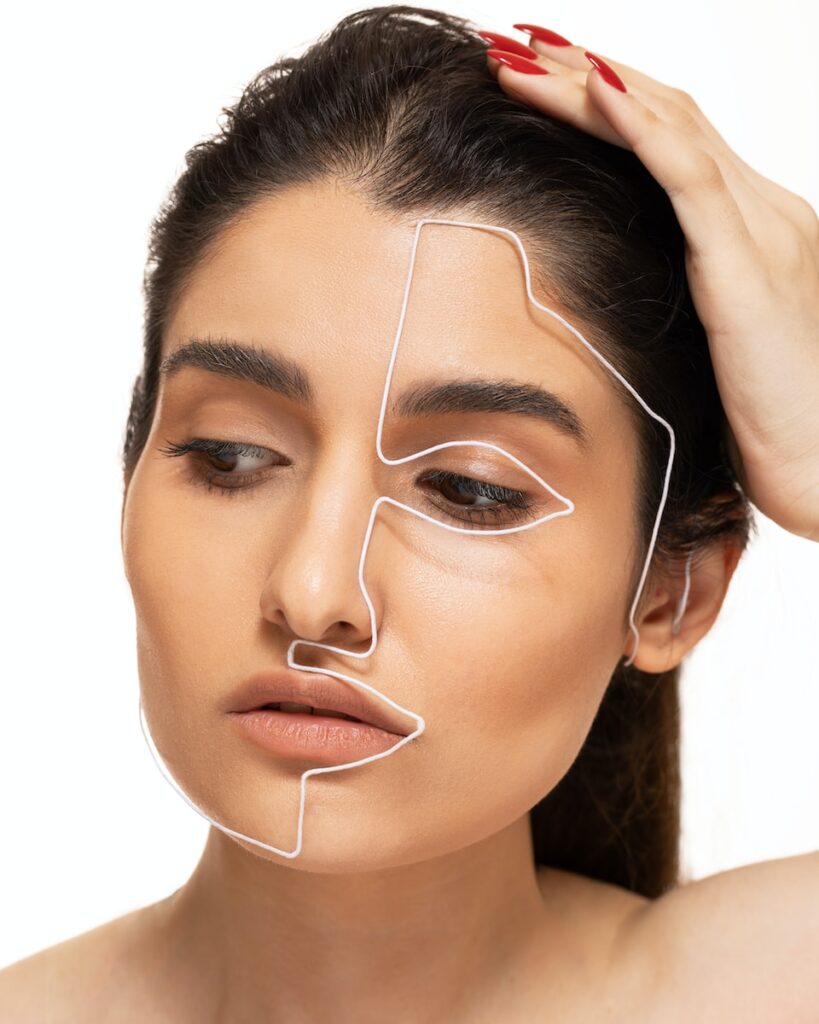
Medical evaluation and clearance
Before undergoing any surgical procedure, it is standard practice to undergo a comprehensive medical evaluation and clearance. This typically involves a physical examination, review of your medical history, blood tests, and any additional tests or consultations deemed necessary by your surgeon.
The purpose of the medical evaluation is to ensure that you are in good overall health and that there are no underlying conditions that may increase the risks associated with the surgery.
Discontinuing certain medications and supplements
In the weeks leading up to your facelift, your surgeon may advise you to discontinue certain medications and supplements that can increase the risk of bleeding or interfere with anesthesia. These may include anti-inflammatory drugs, blood thinners, herbal supplements, and certain vitamins.
It is important to follow your surgeon’s instructions regarding medication discontinuation to minimize any potential complications during the surgery and recovery process.
Quitting smoking and avoiding excessive alcohol consumption
Smoking and excessive alcohol consumption can have a negative impact on the healing process and increase the risk of complications. If you are a smoker, your surgeon will likely advise you to quit smoking well in advance of the facelift. This will improve blood circulation, promote proper healing, and reduce the risk of complications.
Excessive alcohol consumption can also interfere with healing and compromise your immune system. It is advisable to limit alcohol intake both before and after the surgery to ensure a smooth and successful recovery.
Arranging post-surgery care and support
Facelift surgery requires a period of recovery, during which you may need assistance with daily activities and care. It is important to arrange for a support system that can help you during this time.
Consider enlisting a family member, friend, or professional caregiver who can assist with household chores, meal preparation, transportation, and general support. Having someone available to help you during the initial stages of recovery can greatly enhance your comfort and peace of mind.
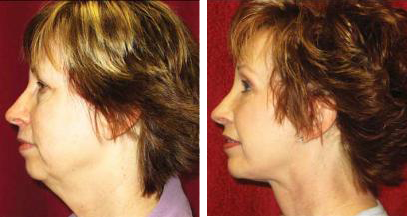
The Facelift Procedure
The facelift procedure itself involves a series of steps designed to address the specific concerns and goals of each individual. This includes selecting the appropriate facelift technique, determining the anesthesia options, deciding on incision placement, and performing the necessary tightening of muscles and removal of excess skin.
Types of facelift techniques
There are various facelift techniques available, and the choice of technique depends on the individual’s needs and desired outcome. Some common techniques include the traditional facelift, mini-facelift, deep plane facelift, and thread lift.
The traditional facelift is the most comprehensive procedure, addressing sagging skin, jowls, and other signs of aging in multiple areas of the face. The mini-facelift is less invasive and focuses on the lower face and neck. The deep plane facelift provides more extensive rejuvenation by lifting and repositioning the deeper layers of tissue. The thread lift is a non-surgical option that uses dissolvable sutures to lift and tighten the skin temporarily.
Your surgeon will recommend the most suitable technique based on your specific concerns and goals.
Anesthesia options
Facelift procedures can be performed under local anesthesia with sedation or general anesthesia, depending on the complexity of the surgery and your comfort level. Local anesthesia with sedation allows you to be relaxed and pain-free during the procedure, while general anesthesia ensures that you are completely asleep and unaware.
Your surgeon will discuss the anesthesia options with you and recommend the best approach based on your medical history, the extent of the surgery, and your comfort level.
Incision placement
The placement of incisions during a facelift depends on the technique used and the specific areas being addressed. Incisions are typically made within the hairline, around the ears, and sometimes under the chin. The goal is to conceal the incisions as much as possible for minimal visible scarring.
Your surgeon will discuss the planned incision placement with you during your consultation, ensuring that you have a clear understanding of what to expect.
Reduction of excess skin and tightening of underlying muscles
The main objectives of a facelift are to remove excess skin, reposition the underlying muscles, and tighten the remaining skin for a smoother and more youthful appearance. The surgeon will make incisions along the predetermined placement, carefully lift the skin, remove any excess, and reposition the underlying tissues.
Muscles may also be tightened, particularly in the neck and jawline, to provide a more defined and sculpted appearance. Once the desired tightening and repositioning are achieved, the incisions are meticulously closed, and the recovery process begins.
Recovery and Aftercare
The recovery period following a facelift is crucial for optimal healing and achieving the desired results. Proper aftercare and adherence to post-surgery instructions can greatly influence the outcome of the procedure.
Immediate post-operative care
Immediately after the facelift procedure, you can expect some swelling, bruising, and discomfort. Your surgeon will provide specific instructions on how to care for your incisions, manage any discomfort, and navigate the immediate recovery period.
Cold compresses, prescribed medications for pain management, and keeping your head elevated while resting can all contribute to a smoother recovery.
Managing pain and discomfort
Facelift surgery is a surgical procedure, and some degree of pain or discomfort is to be expected during the recovery period. Your surgeon will prescribe pain medications to manage any discomfort and provide guidelines for their use.
In addition to prescribed medications, icing the treated areas, maintaining a proper posture, and avoiding strenuous activities can help minimize pain and promote a quicker recovery.
Reducing swelling and bruising
Swelling and bruising are common after a facelift surgery. To reduce the swelling, your surgeon may recommend using cold compresses or ice packs in the first few days following the surgery. Keeping your head elevated while resting can also help alleviate swelling.
Bruising typically resolves on its own within two to three weeks. Avoiding blood-thinning medications, such as aspirin and certain supplements, prior to the surgery can help minimize bruising.
Following post-surgery instructions
Strictly adhering to the post-surgery instructions provided by your surgeon is crucial for a successful recovery. These instructions may include wearing a compression garment to minimize swelling, avoiding sun exposure, limiting physical activities, and maintaining proper wound care.
It is essential to attend all follow-up appointments scheduled with your surgeon to monitor your progress, address any concerns, and ensure a smooth recovery.

Long-term Results and Maintenance
Understanding the long-term results and the need for ongoing maintenance is important when considering a facelift. While a facelift can provide long-lasting rejuvenation, it is essential to adopt a proper skincare regimen and make lifestyle choices that support the longevity of the results.
Duration of facelift results
The results of a facelift can last for several years, but they are not permanent. While the aging process will continue, the surgery can effectively turn back the clock and provide a more youthful appearance.
To maintain the results, it is important to take care of your skin, protect it from sun damage, and follow a balanced diet and exercise routine. Additionally, regular visits to your surgeon for follow-up and potential touch-up procedures can help prolong the effects of the initial facelift.
Maintaining facial rejuvenation
Facelift surgery is just one aspect of maintaining facial rejuvenation. To further enhance and prolong the results, it is important to adopt a comprehensive skincare regimen that includes cleansing, moisturizing, and protecting the skin from sun damage.
Regular use of high-quality skincare products, such as retinol creams and antioxidants, can help minimize the appearance of wrinkles and maintain overall skin health.
Combining facelift with other procedures
In some cases, a facelift alone may not address all of your concerns. Combining a facelift with other procedures, such as eyelid surgery, brow lift, or fat transfer, can provide a more comprehensive facial rejuvenation.
During your consultation, your surgeon will assess your individual needs and discuss the potential benefits of combining procedures to achieve your desired outcome.
Regular skincare regimen
A proper skincare regimen is essential to maintain the results of a facelift and to ensure the long-term health and appearance of your skin. This regimen should include cleansing, exfoliating, moisturizing, and protecting your skin from sun damage.
Your surgeon or skincare specialist can recommend specific products that are suitable for your skin type and concerns.
Risks and Complications
Like any surgical procedure, facelift surgery carries certain risks and potential complications. While serious complications are rare, it is important to be aware of them and discuss them with your surgeon.
Potential side effects
Common side effects after a facelift can include swelling, bruising, temporary numbness, and discomfort. These side effects are typically temporary and subside on their own within a few weeks.
Your surgeon will provide guidelines on managing these side effects and may prescribe medications to help alleviate any discomfort.
Infection and poor wound healing
Although rare, infection and poor wound healing are possible complications of facelift surgery. Following proper wound care instructions, avoiding exposure to bacteria, and attending follow-up appointments can help minimize these risks.
Nerve damage and sensory changes
Facelift surgery involves delicate facial nerves, and in rare cases, nerve damage or temporary sensory changes may occur. Your surgeon will take utmost care to protect these nerves during the procedure and should discuss the risks and potential complications with you beforehand.
Unsatisfactory results
While a facelift can provide significant improvements, there is always the possibility of unsatisfactory results. It is crucial to have realistic expectations, communicate your goals clearly with your surgeon, and understand the limitations of the procedure.
In the event that you are not satisfied with the outcome, discuss your concerns with your surgeon, as there may be options for revision or further enhancements.
In conclusion, getting a facelift is a decision that requires careful consideration of various factors such as age-related concerns, overall health, emotional readiness, and having realistic expectations. Understanding the aging process, recognizing when you may be ready for a facelift, and undergoing a thorough consultation and assessment with a qualified surgeon are necessary steps in this process. Proper preparation, the facelift procedure itself, and the recovery and aftercare phase also significantly contribute to the success of a facelift. It is important to maintain a long-term skincare regimen, known the potential risks and complications, and have realistic expectations about the outcomes. By taking these factors into account, you can make an informed decision and achieve a more youthful and rejuvenated appearance through a facelift procedure.
Lifting The Veil: Myths And Facts About Face & Neck Lifts(Opens in a new browser tab)
Blepharoplasty: A Refreshed Gaze For The Modern Dubai Woman(Opens in a new browser tab)
Unveiling The Art Of Rhinoplasty At Stylish.ae: Perfecting The Profile(Opens in a new browser tab)


